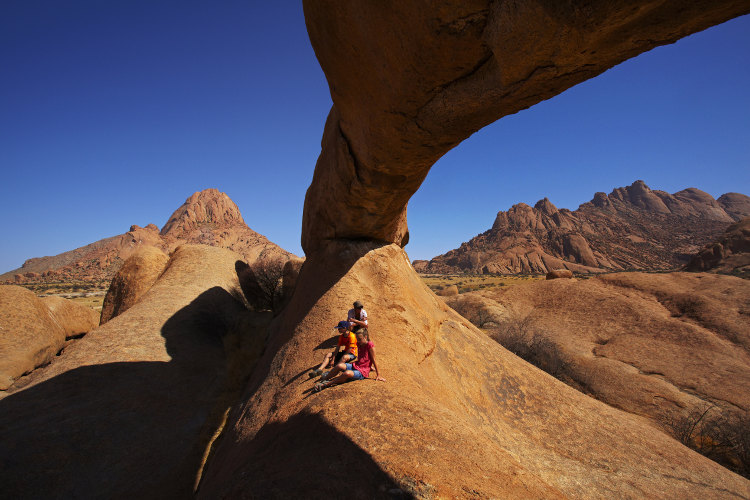
The rounded granite peak of Spitzkoppe towers 700m over the Namib plains of southern Damaraland like a mirage on the horizon – it’s no wonder that it has been attracting rock climbers for three quarters of a century. The main summit, first reached in 1946, has seven different ascent routes that range in grades from 17 to 24 (AUS). The immediate area of Spitzkoppe has another 200 or so climbing routes of varying difficulties.
Climbers need to be self-sufficient and carry their own ropes and equipment (there are no guides or suitable equipment to hire on site). E Haber’s climbing guide Spitzkoppe and Pontoks: Namibia - A Climber's Paradise is an invaluable reference. There is an incredibly scenic campground at Spitzkoppe.
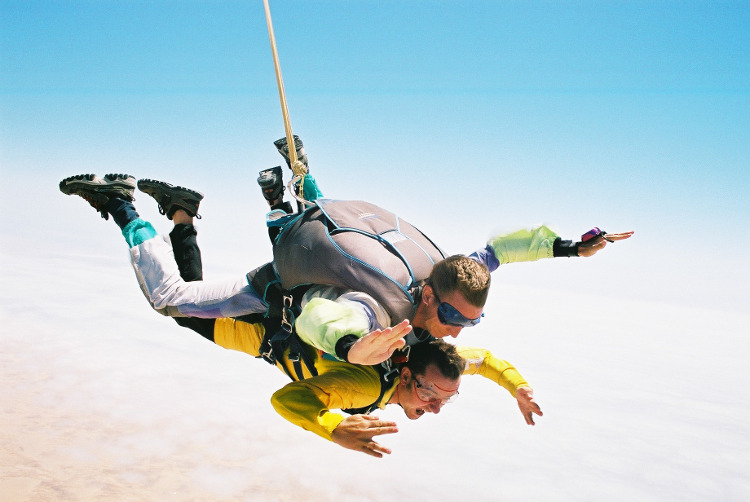
Seeing the large swells of the cold southern Atlantic Ocean crashing into the delicate-looking dunes of the world’s oldest desert is compelling from wherever you are standing. Seeing it while falling towards earth at 220km/h is mind blowing. And the incredible aerial views of the desert landscape and ocean during the 25-minute flight up to the jump zone in a tiny Cessna aircraft is reason enough for the trip (and price tag). The deafeningly exciting free fall from 3000m lasts for approximately 30 seconds, before your parachute (and silence) takes over at 1500m.
Ground Rush Adventures is based out of Swakopmund. It offers tandem jumps for beginners, as well as static-line courses and jumps, and accelerated free-fall courses.
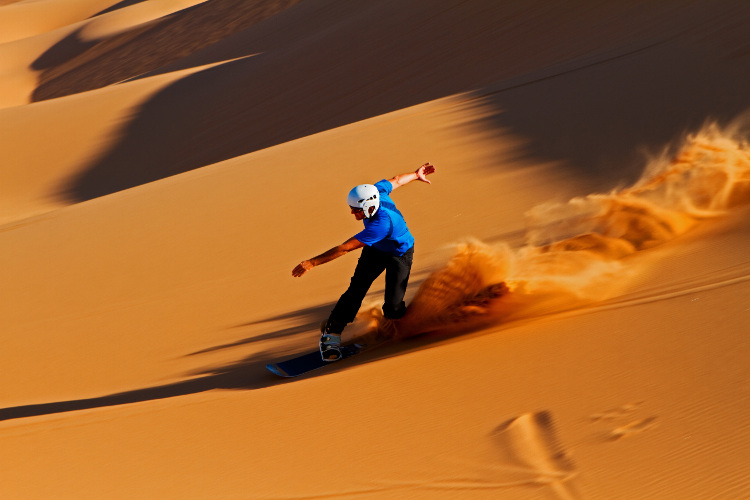
The steep sides of the Namib’s dunes are more than just a pretty face to look at – they are challenging slopes to carve down on heavily waxed snowboards. If you’ve surfed or snowboarded before, the transition is usually a quick one. If not, fear not – crashes involve rather soft landings. And if speed is the ultimate motivator, rather than graceful turns, try the lie-down option on a greased-up sheet of Masonite. Much like tobogganing, participants zoom straight down the dune faces at up to 80km/h. If that doesn’t get the heart pumping, the climb back to the top certainly will.
Alter Action runs trips out of Swakopmund most mornings. The four-hour excursions include equipment rental, transport, instruction, lunch and a beverage.
Harnessing the power of the winds along the Atlantic coast with a large kite is a thrilling challenge, whether on land or water. Novices can first learn the ropes (literally) with powerkiting lessons, while those with the skills can take on kitesurfing courses (international levels 1-3) in the Atlantic or basic landboarding lessons on the Namib’s sands. Paragliding courses along this section of coast are also on the horizon.
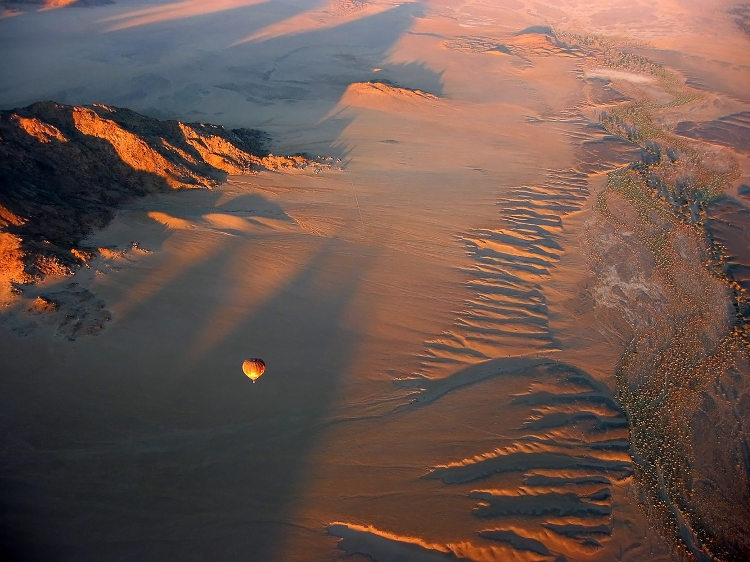
The 23,000 sq km Namib-Naukluft National Park is home to some of the most spectacular dunes on the planet, particularly in the area around Sossusvlei. Here, the winds have shaped the bright orangey-red sands into elegant parabolic shapes hundreds of metres high. Viewing this unique desert landscape from the air is a spellbinding experience and early morning balloon rides are possible.
Namib Sky Balloon Safaris operate the trips every morning at sunrise, weather permitting (trips don't run 15 January to 15 February due to heat). Pickups can be arranged from several accommodation options in the Sossusvlei/Sesriem area. Flights include a champagne breakfast upon landing.
A multi-day hike through the world's second largest canyon (only Arizona's Grand Canyon is bigger) is as challenging as it is unforgettable. Situated in the far south of Namibia, the startlingly beautiful Fish River Canyon is 550m deep, 27km wide and 160km long. The intense 85km trail through it, which takes hikers through 1.5 billion years of geological history, is usually done over five or six days (7 to 8 hours of walking per day).
The trail is accessible only from May to mid-September due to soaring temperatures the remainder of the year. Only 30 people per day are permitted on the trail (reservations need to be made with Namibia Wildlife Resorts).
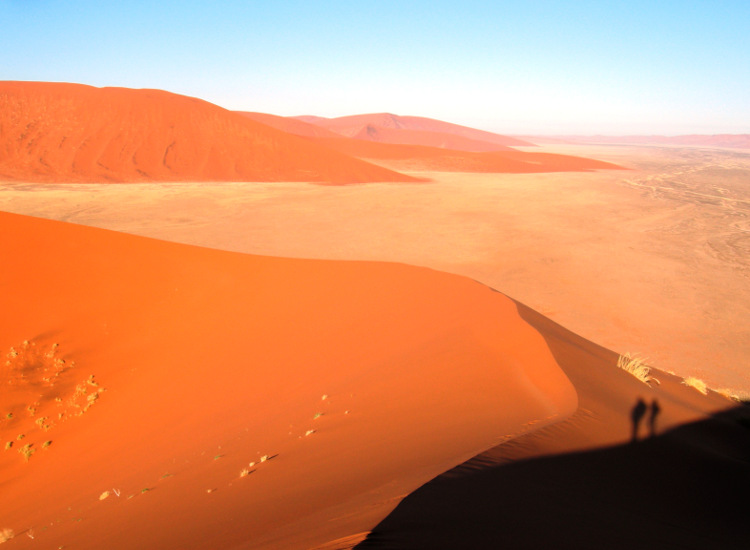
Namibia's dunes, whether they are orange, cream, red or violet in colour, present many challenges, and climbing them is certainly one of them. The biggest dune at Sossusvlei – Big Daddy – stands at almost 330m and the trek to the top can seem like climbing a mountain several times its size due to the sand shifting beneath your feet. That said, the surroundings make the effort an incredibly surreal and out-of-this-world experience.
Finding the firmest footing is key to any dune ascent, so try to hike up the crest with your feet on the windward side. And if you are following someone, place your feet in their footsteps to ease the workload. Footwear inevitably becomes full of sand, which leads some to go barefoot.
While the varied composition of the Namib's sand doesn't play much of a role in the climb, it can certainly affect the descent. In various areas of the desert, including a remote section along the Skeleton Coast, the dunes' mineral composition allows the sand grains to resonate at certain frequencies when disturbed. Sliding down the soft side of the dune (the leeward side) in a seated position can cause the sand to sing (or hum), usually in notes E, F or G. The Namib is one of 30 or so places on the planet that this phenomena occurs.
Matt Phillips is Lonely Planet's Destination Editor for sub-Saharan Africa. You can follow him on Twitter @Go2MattPhillips